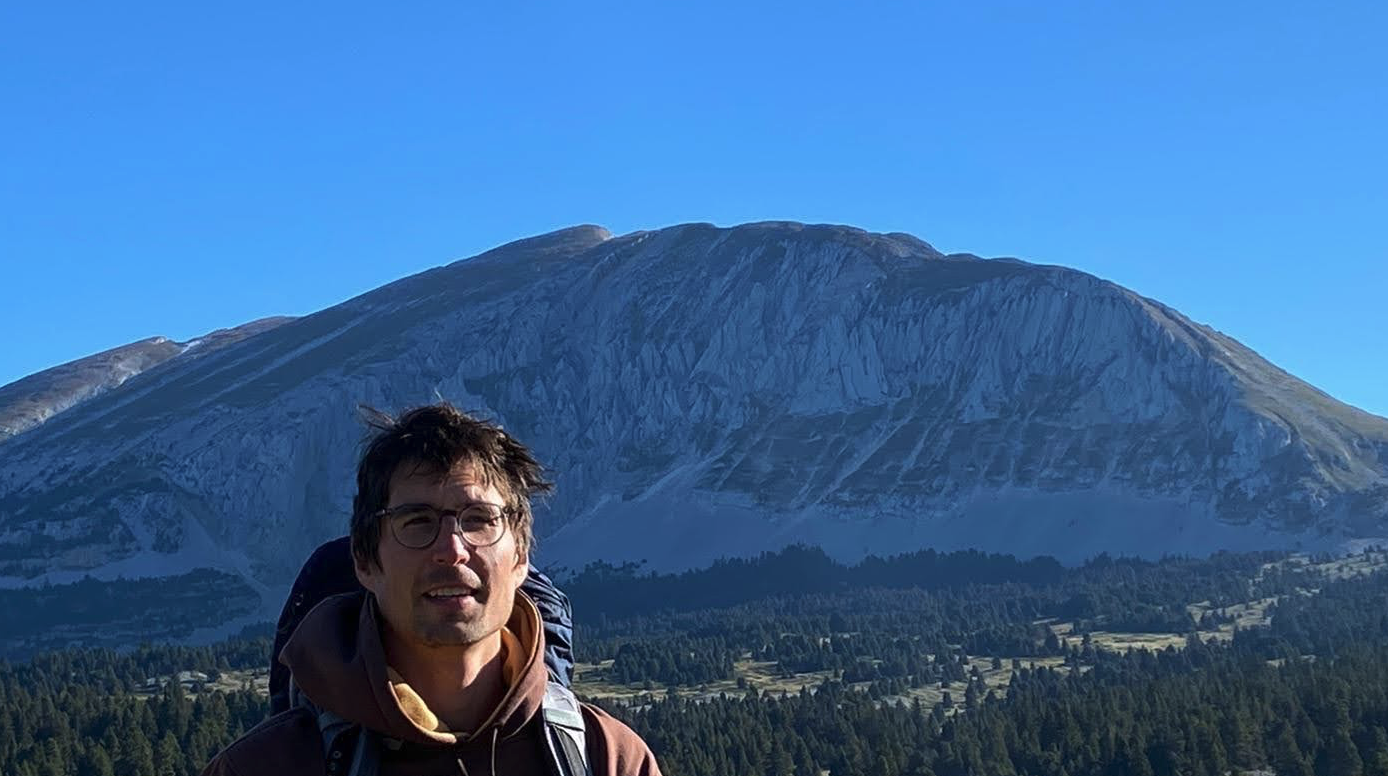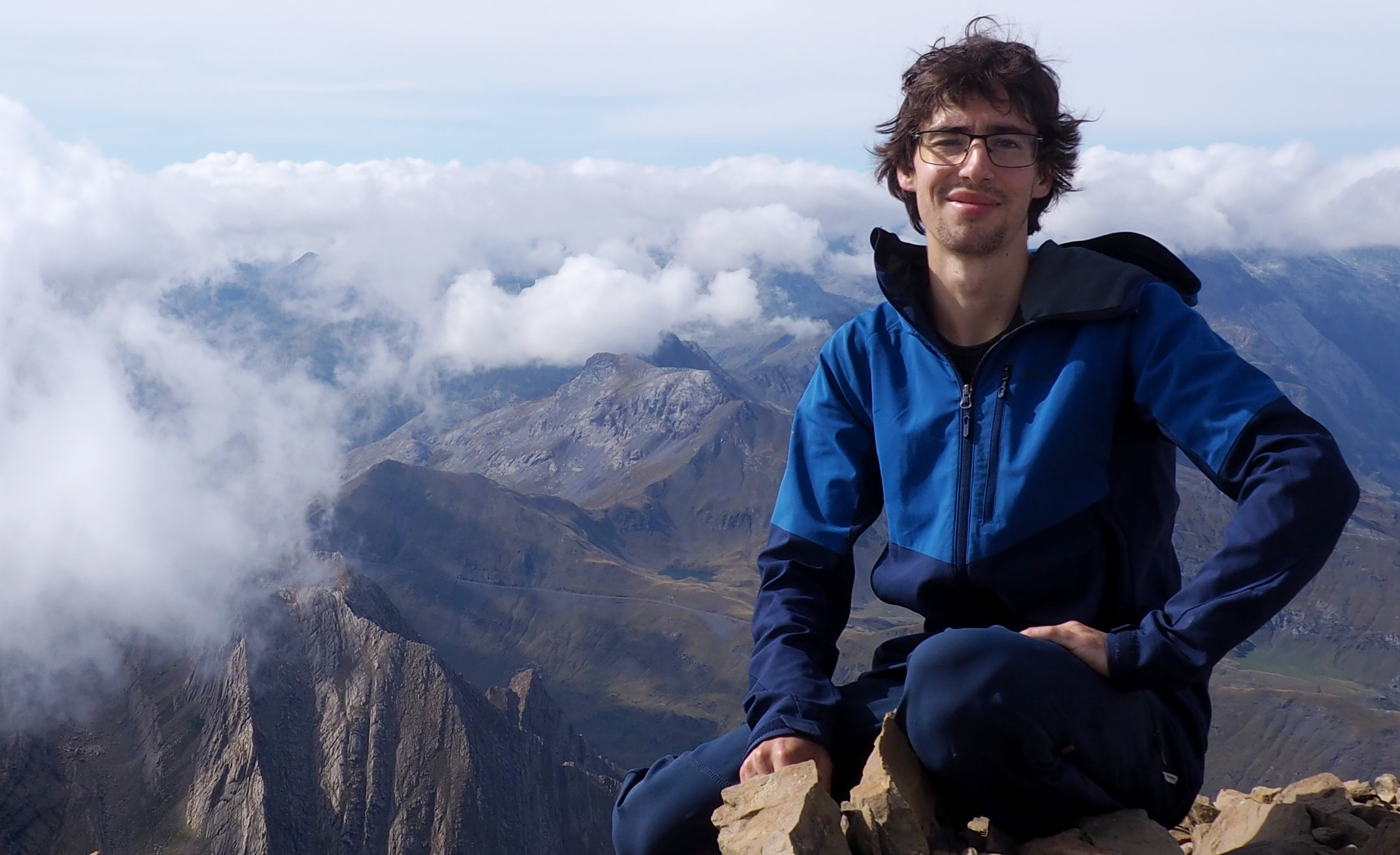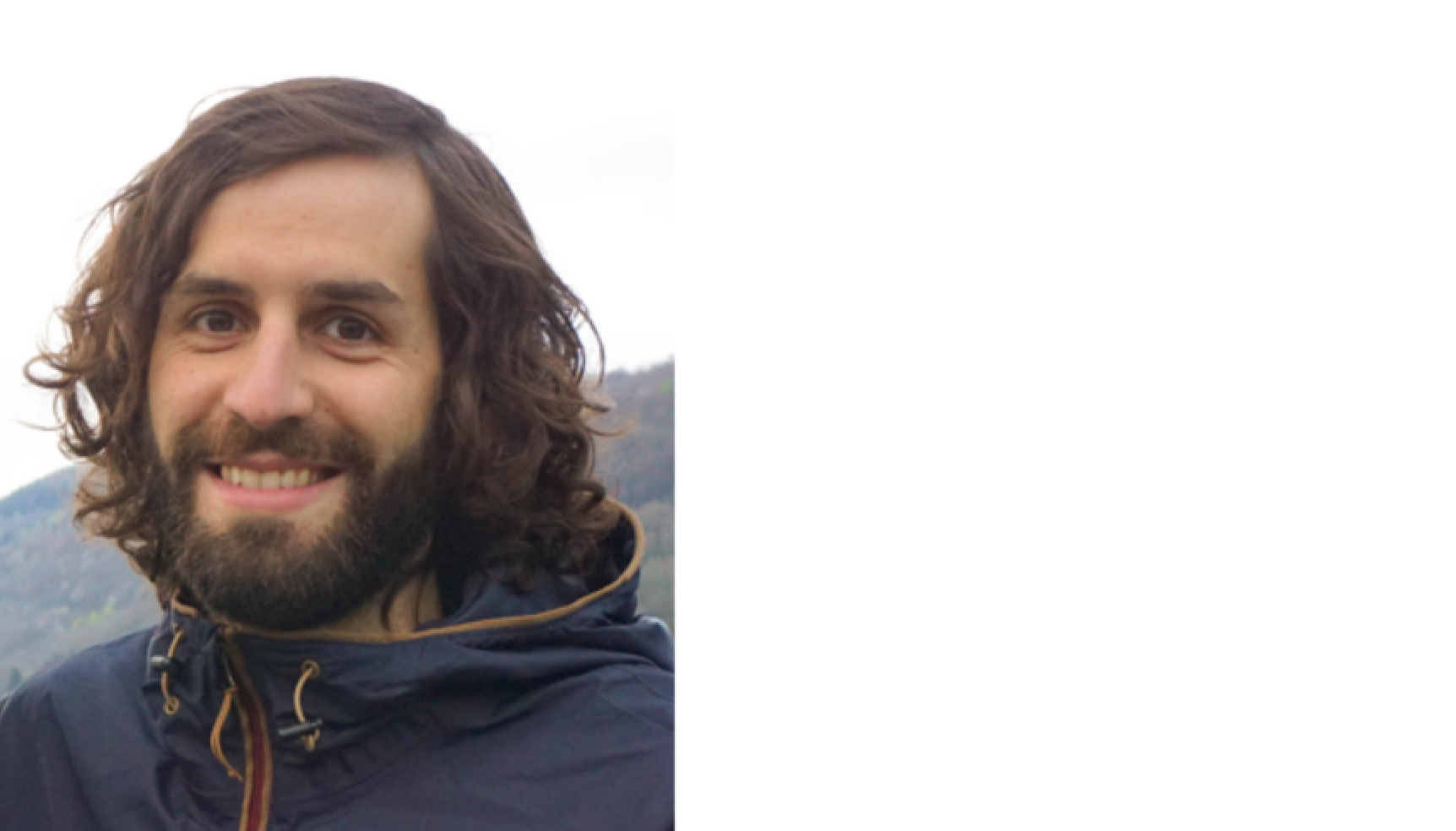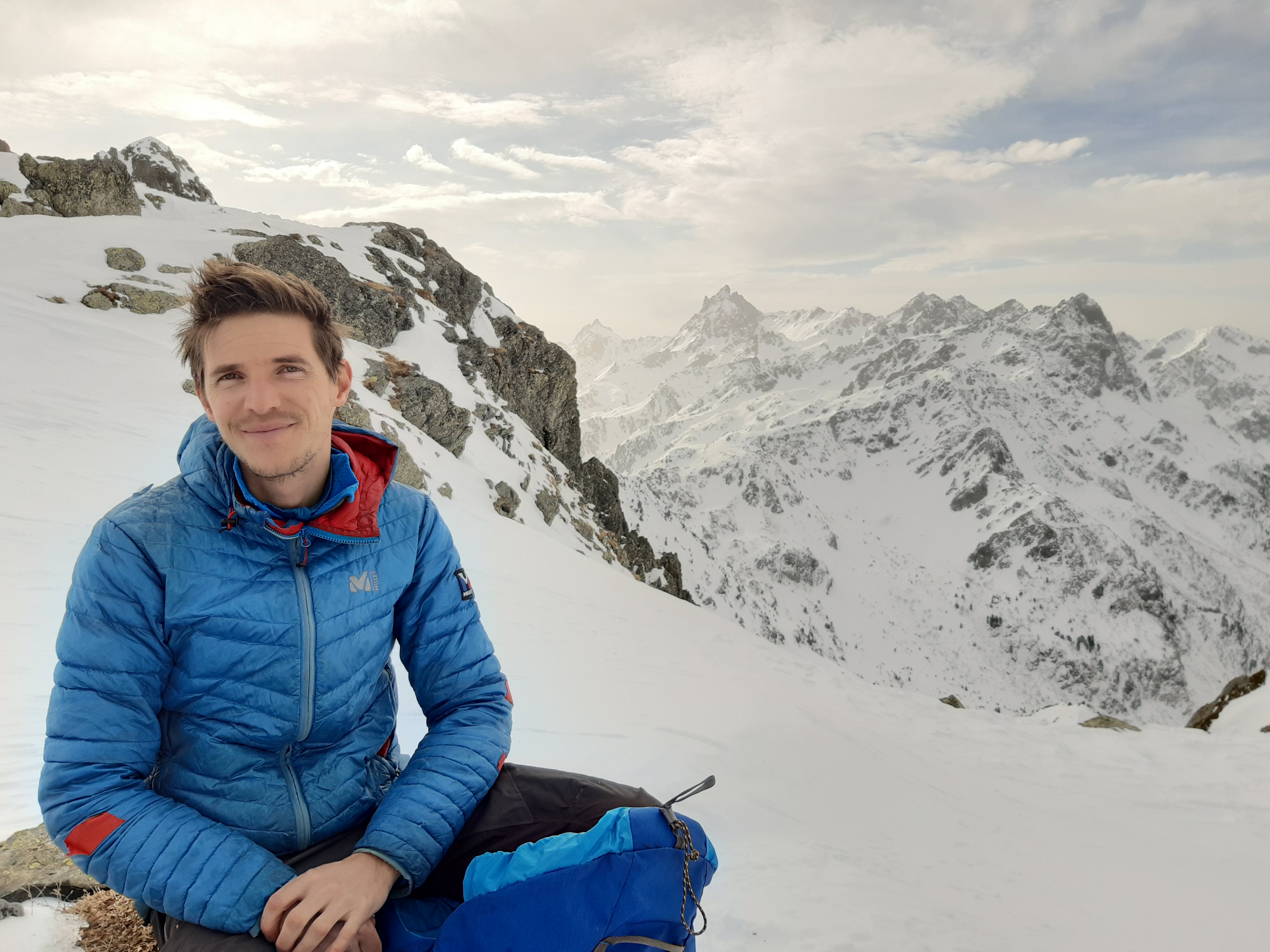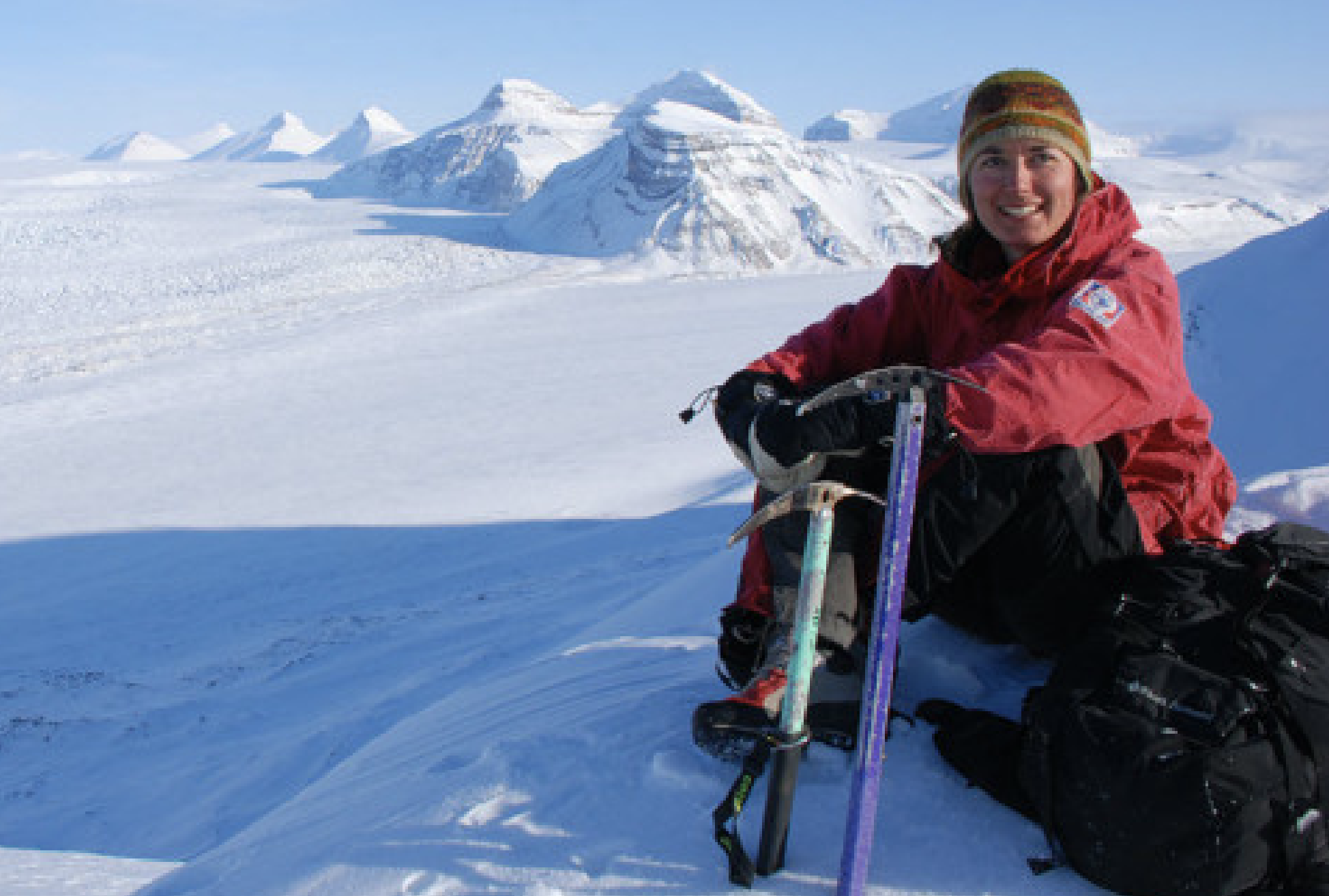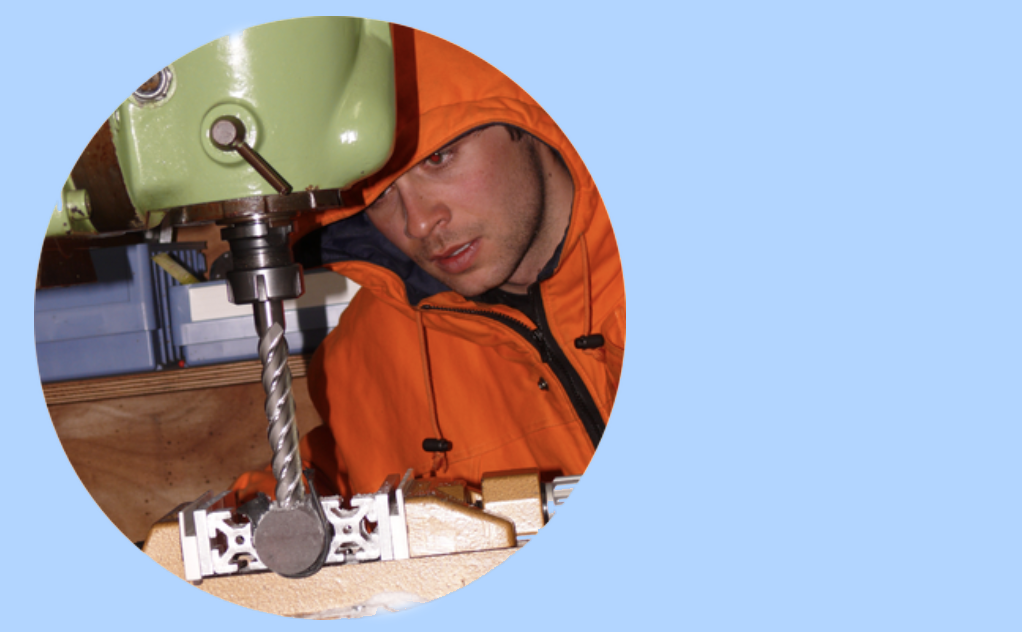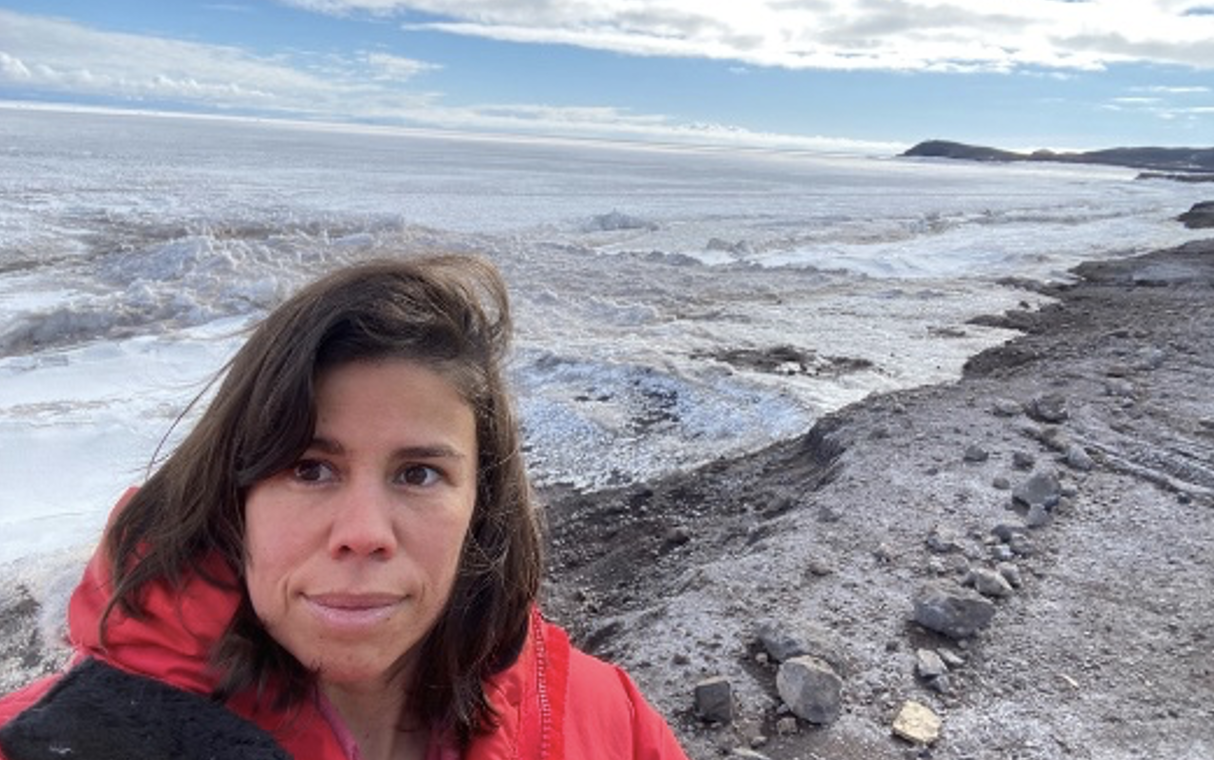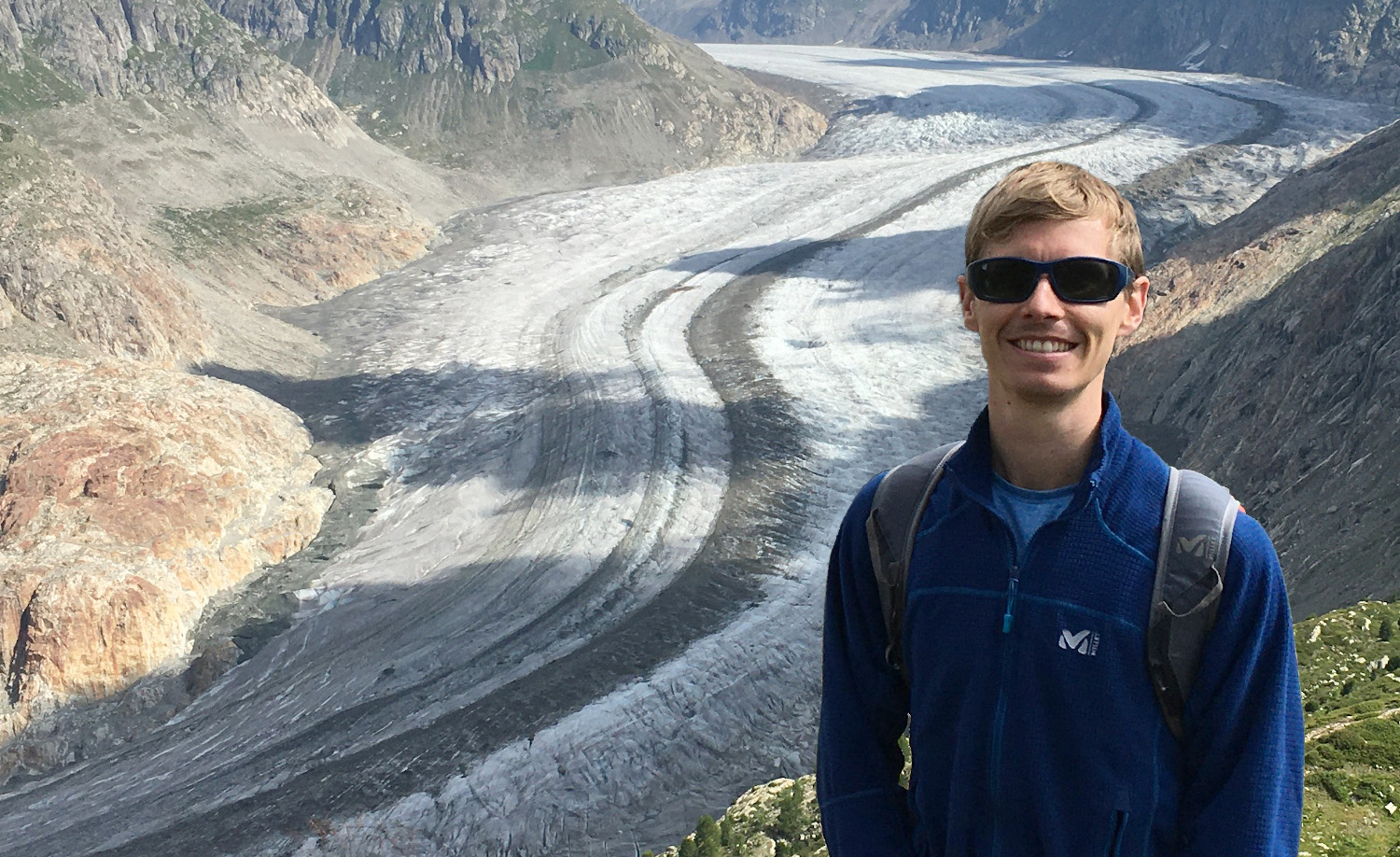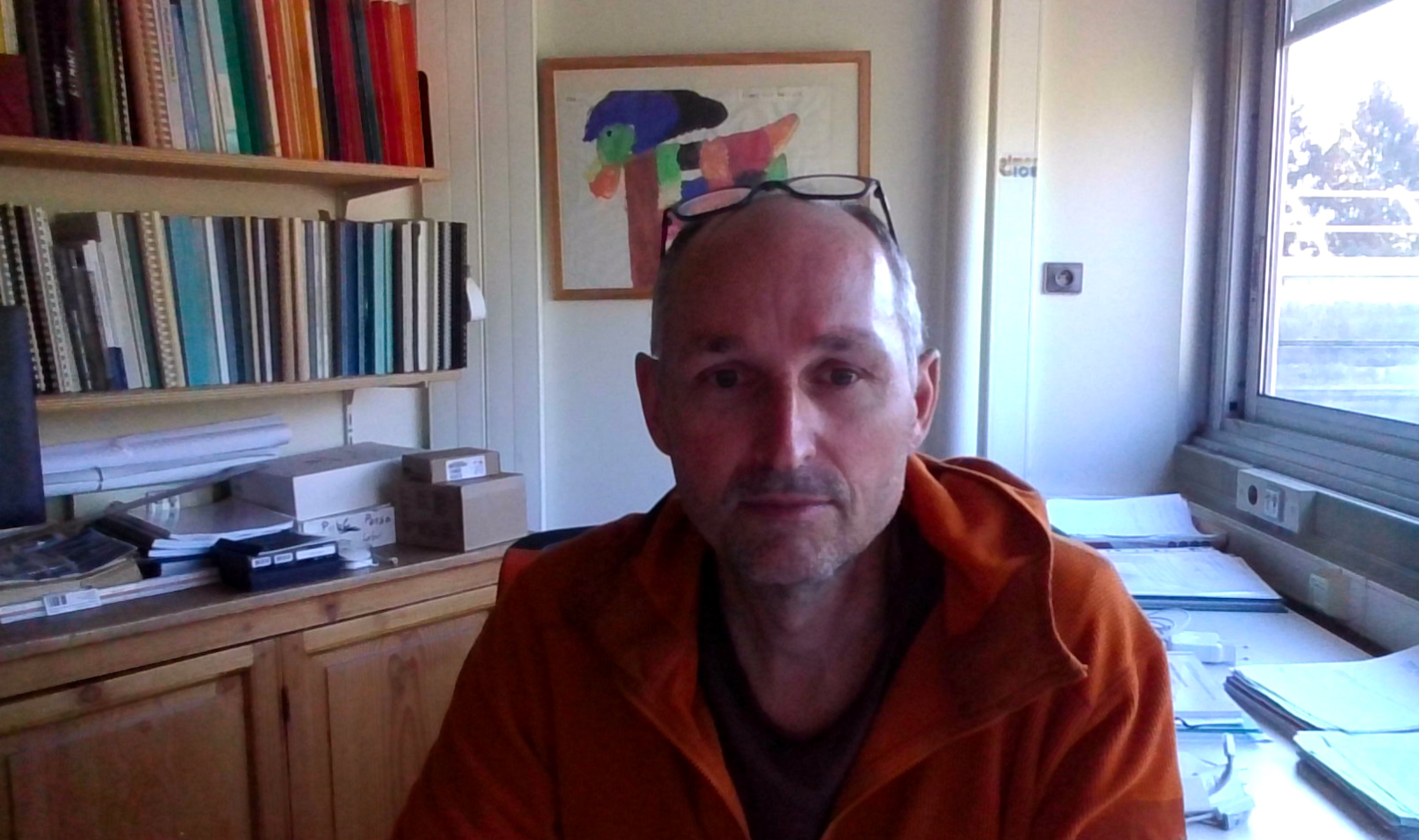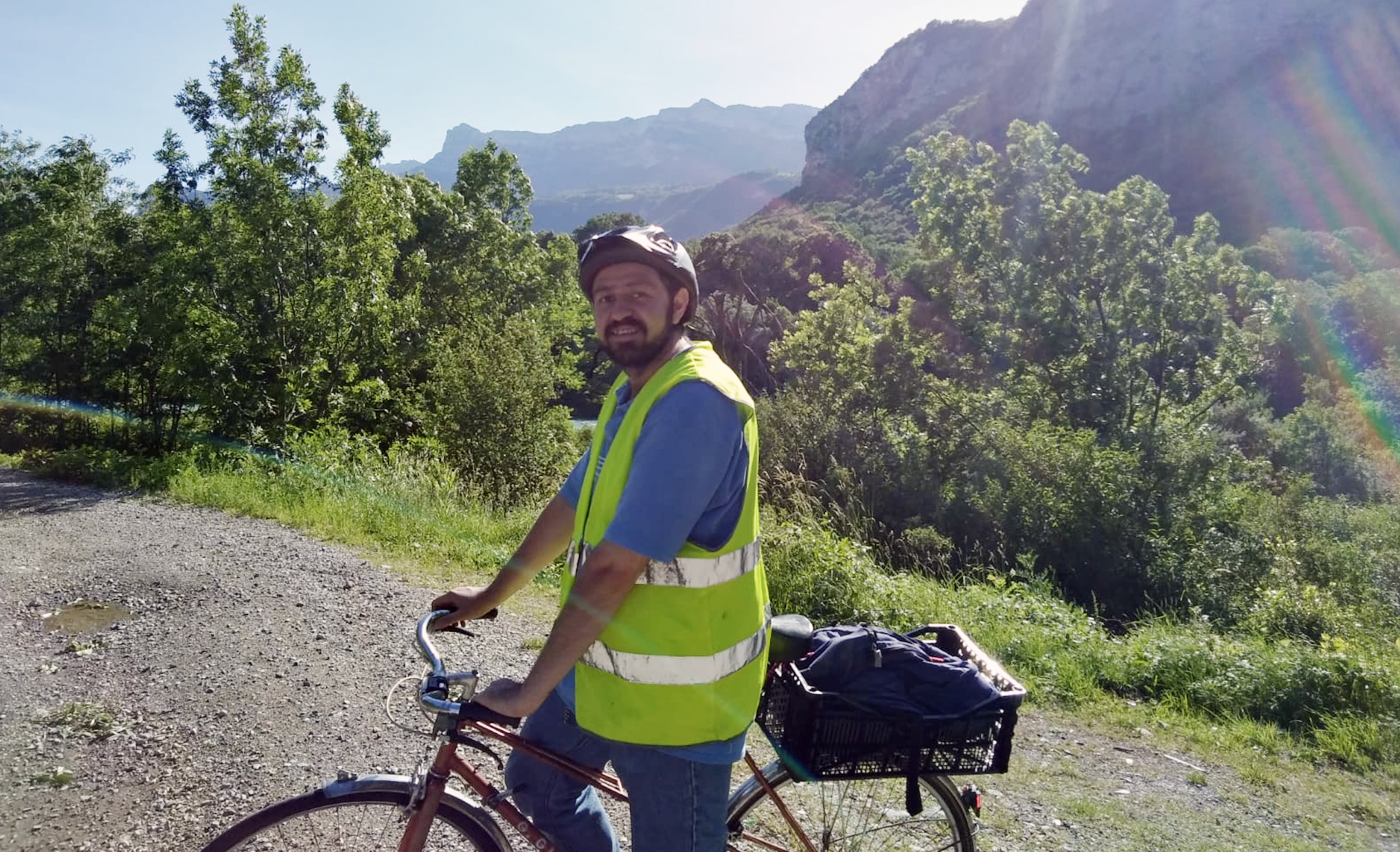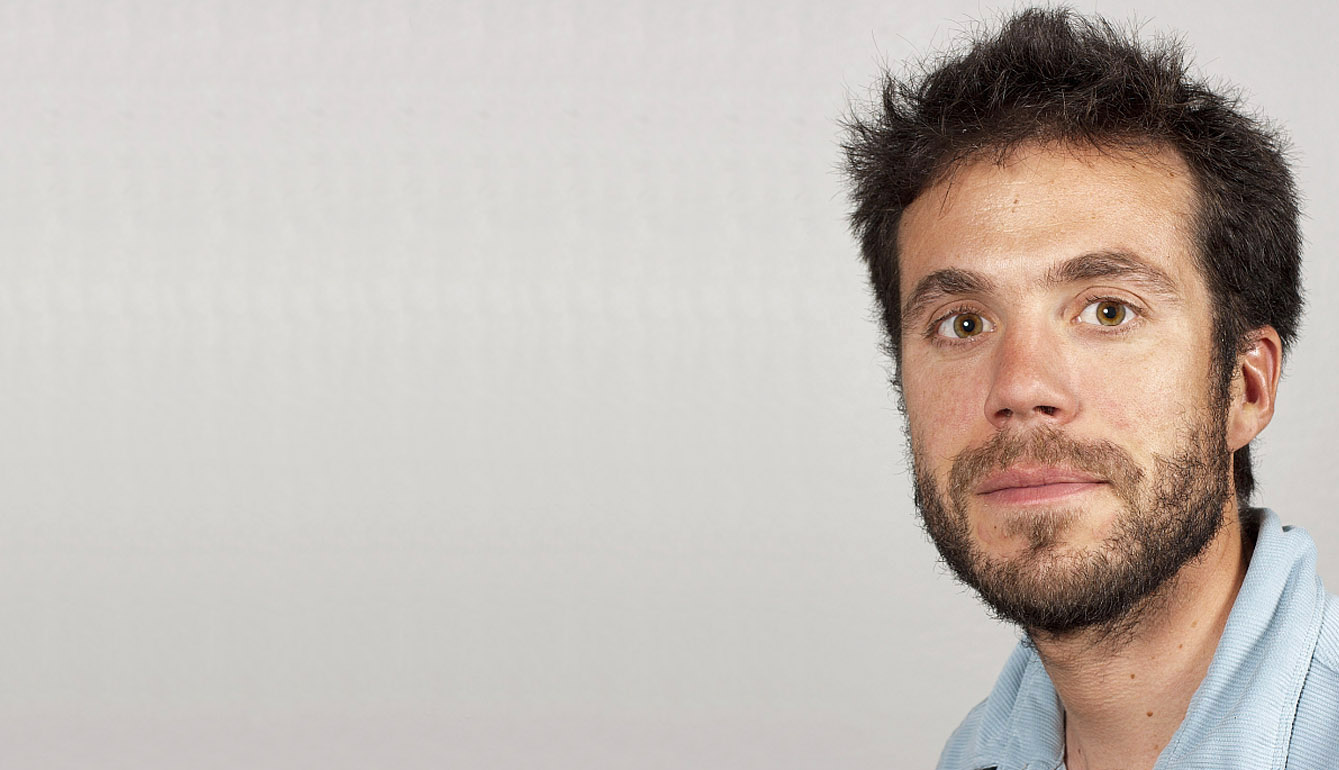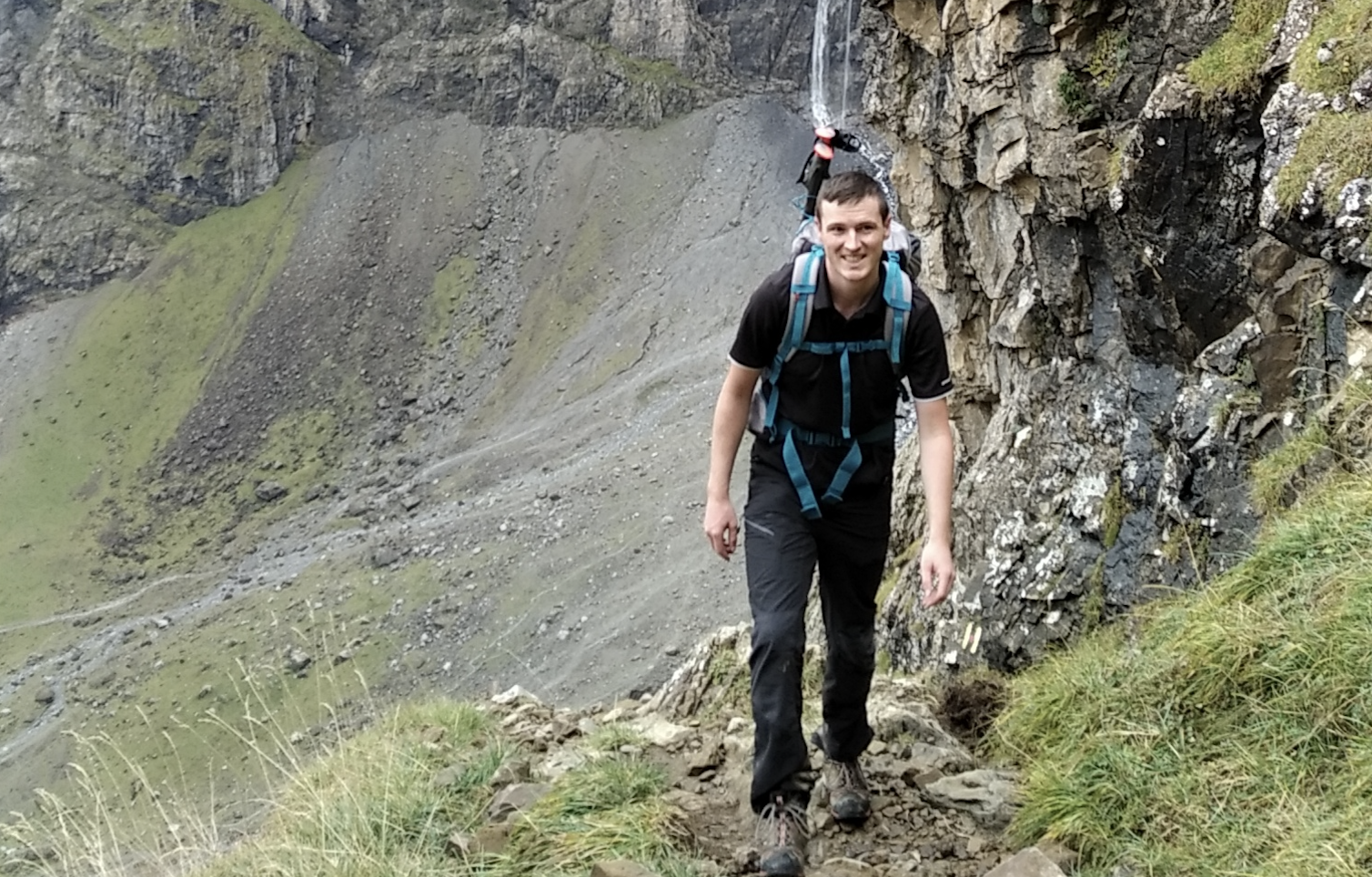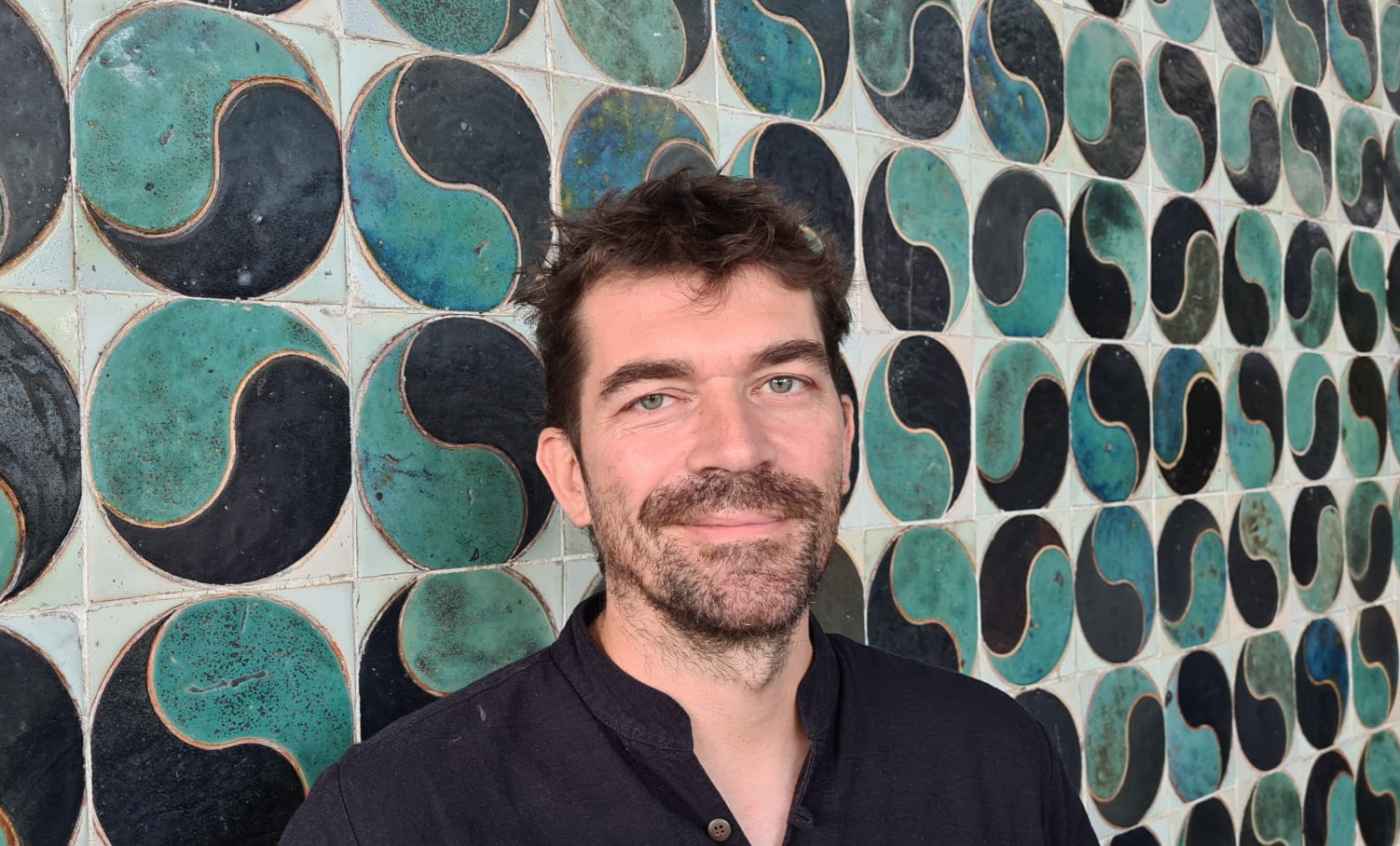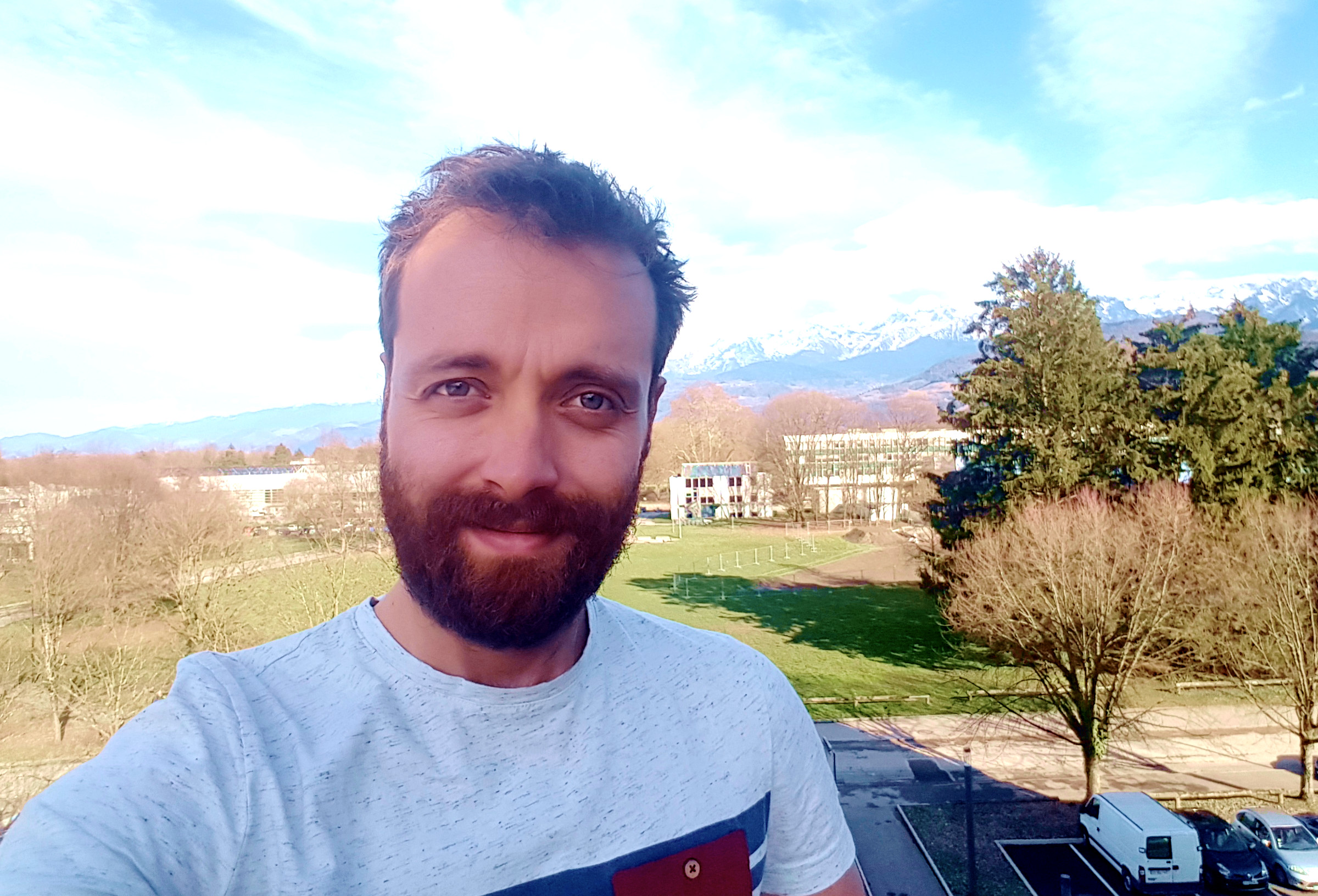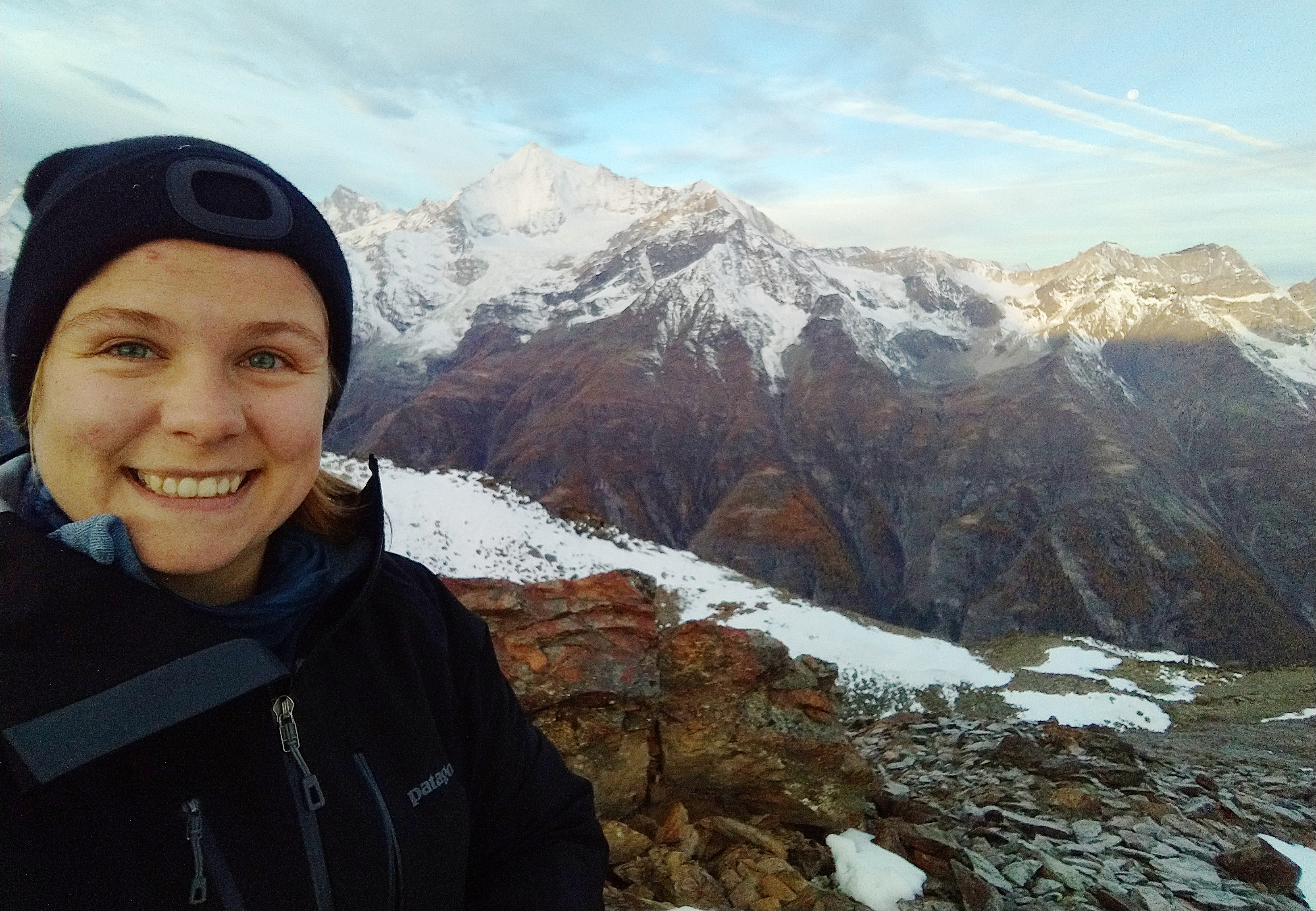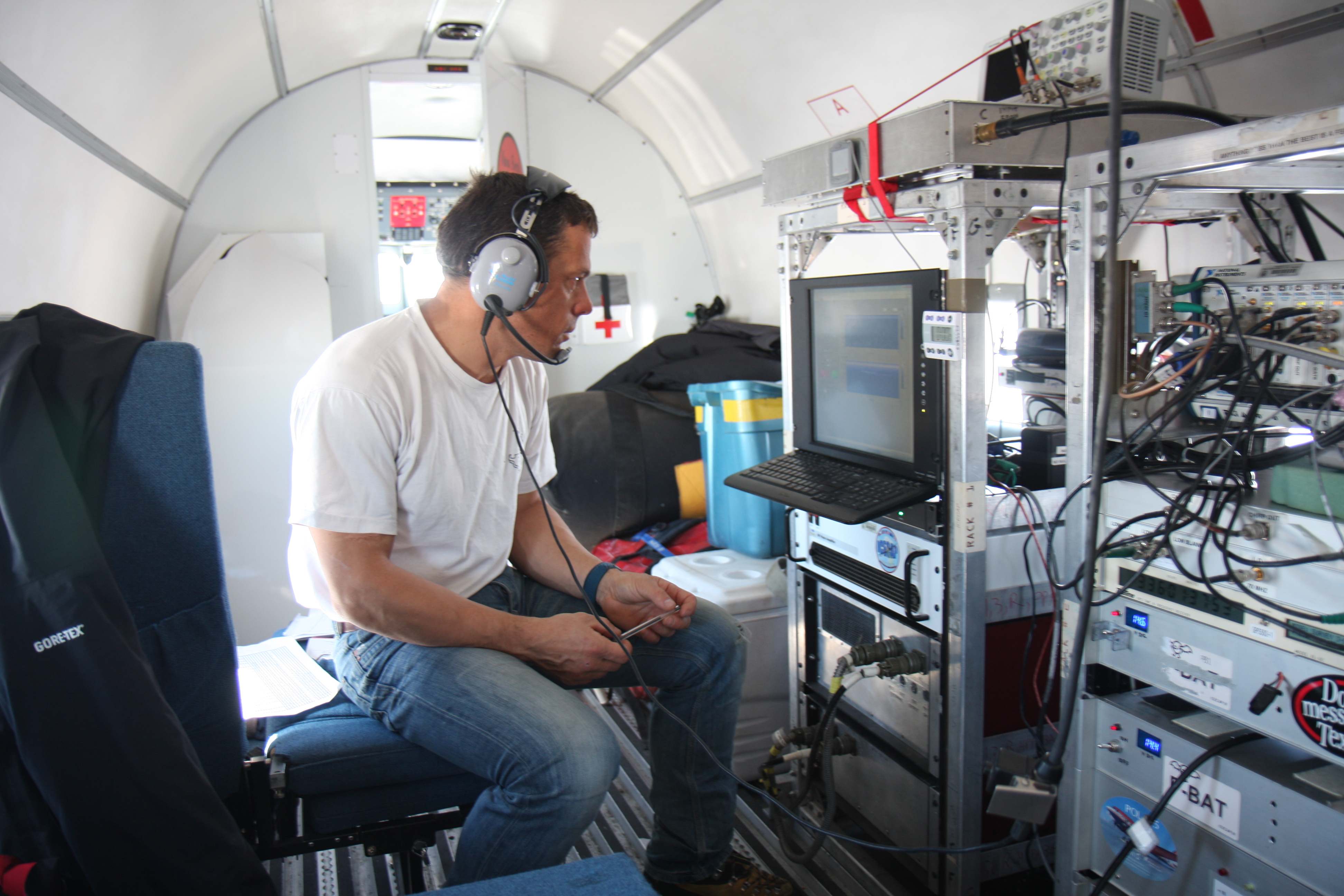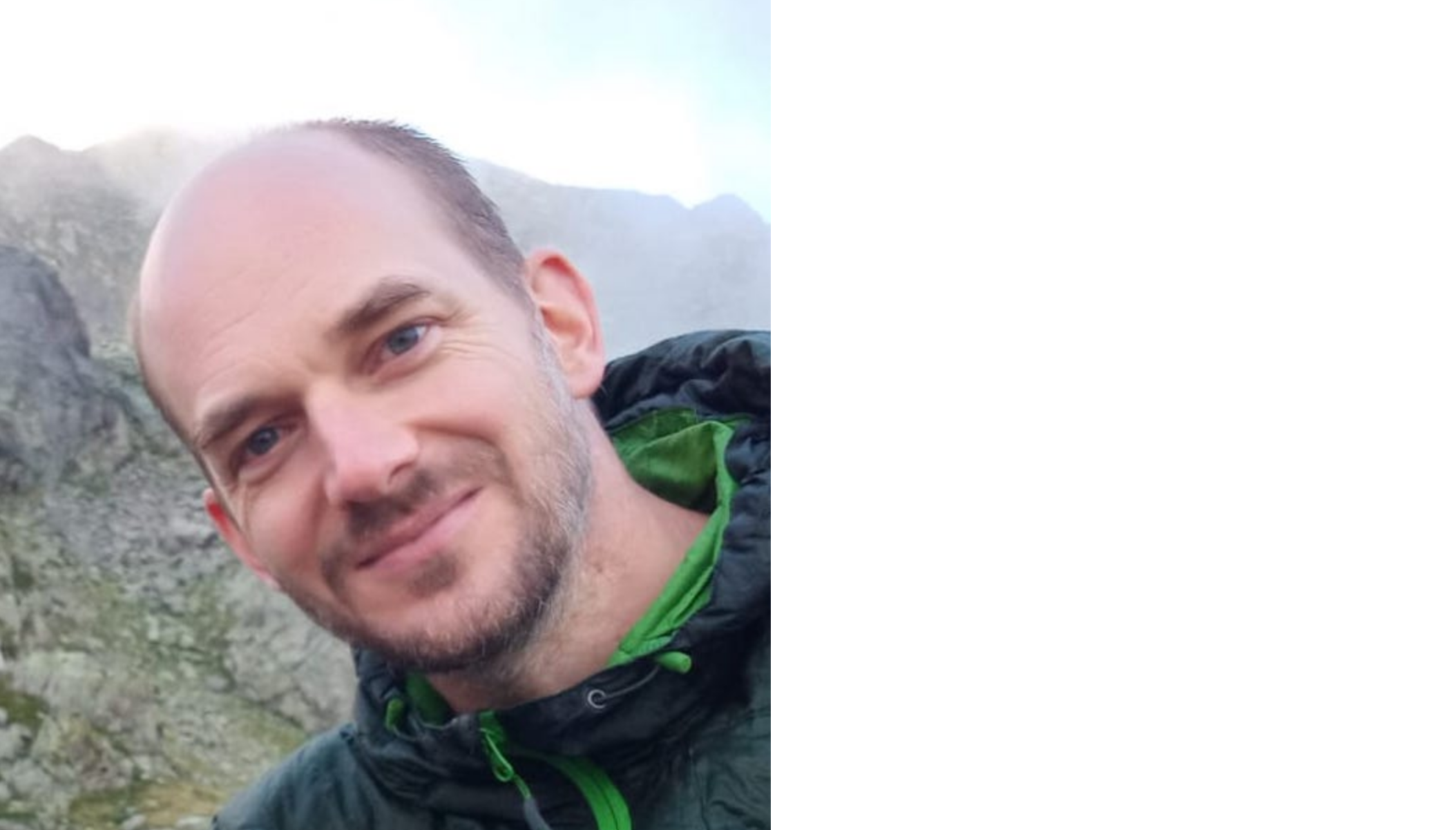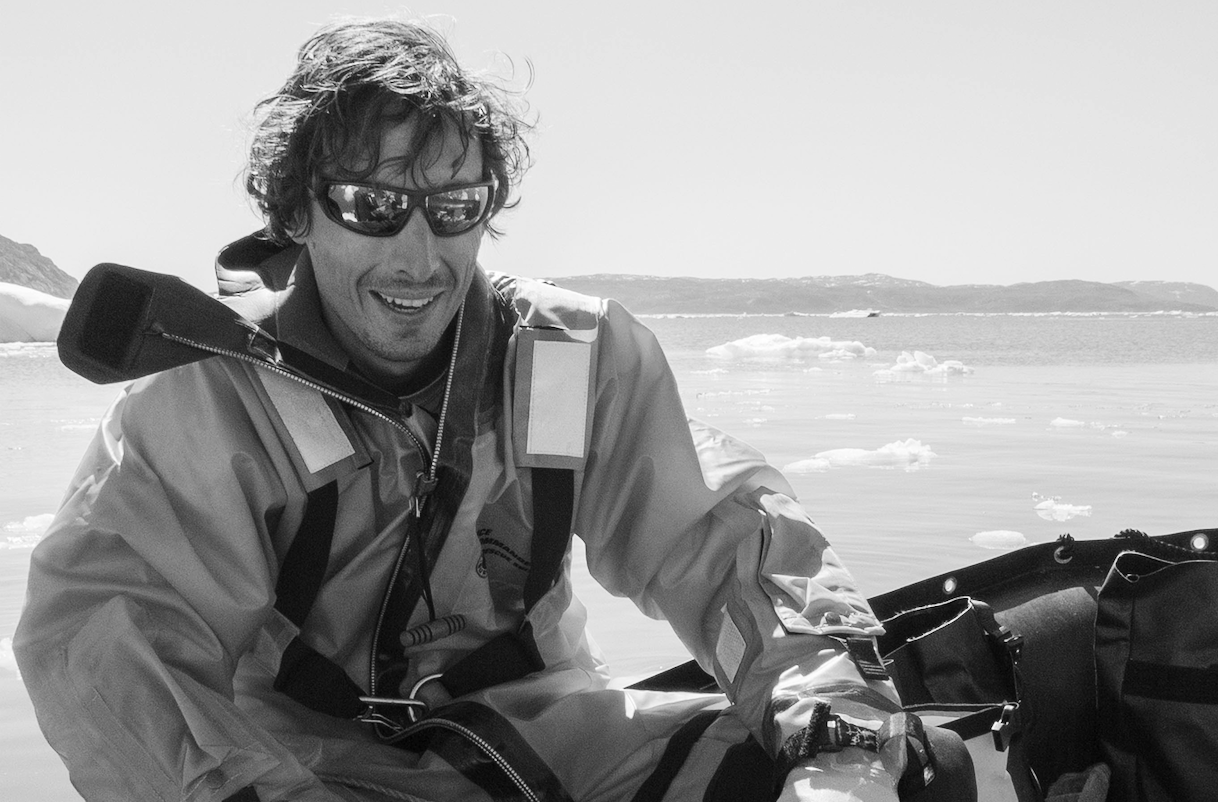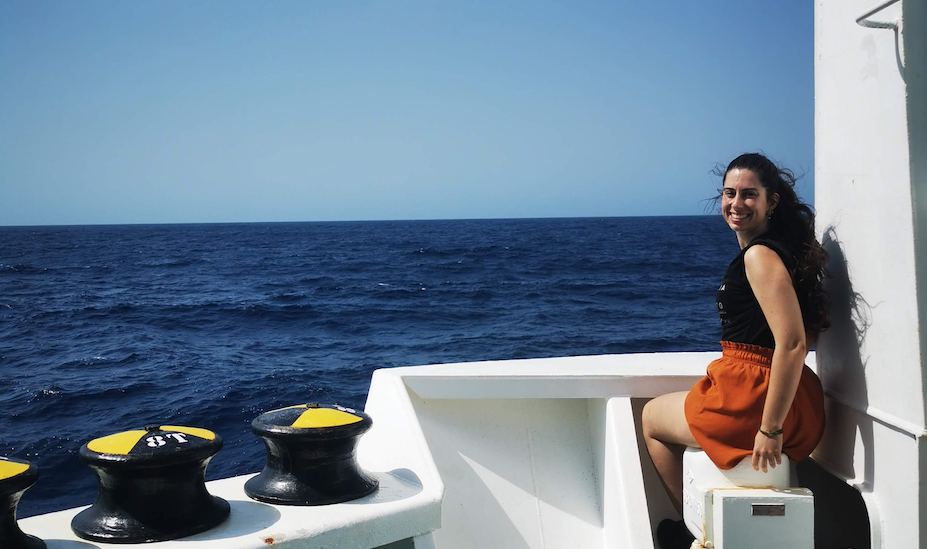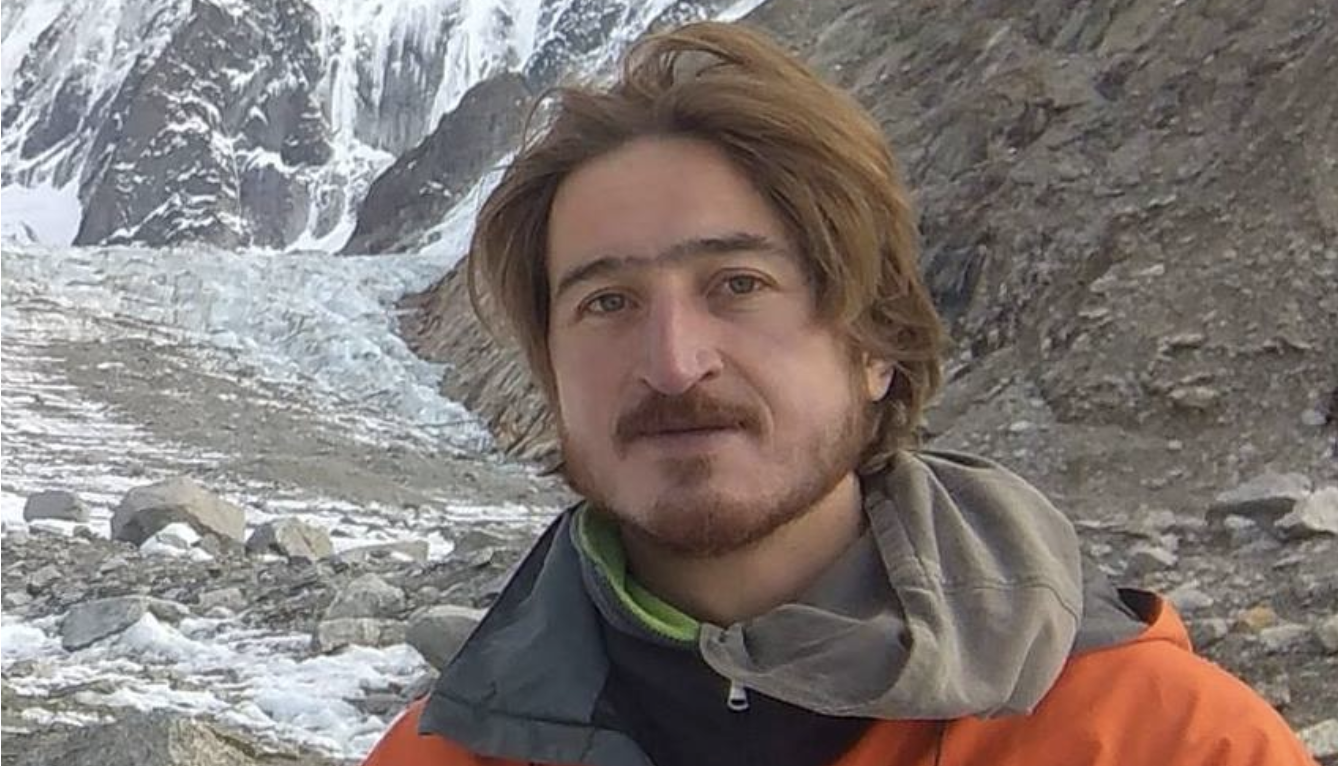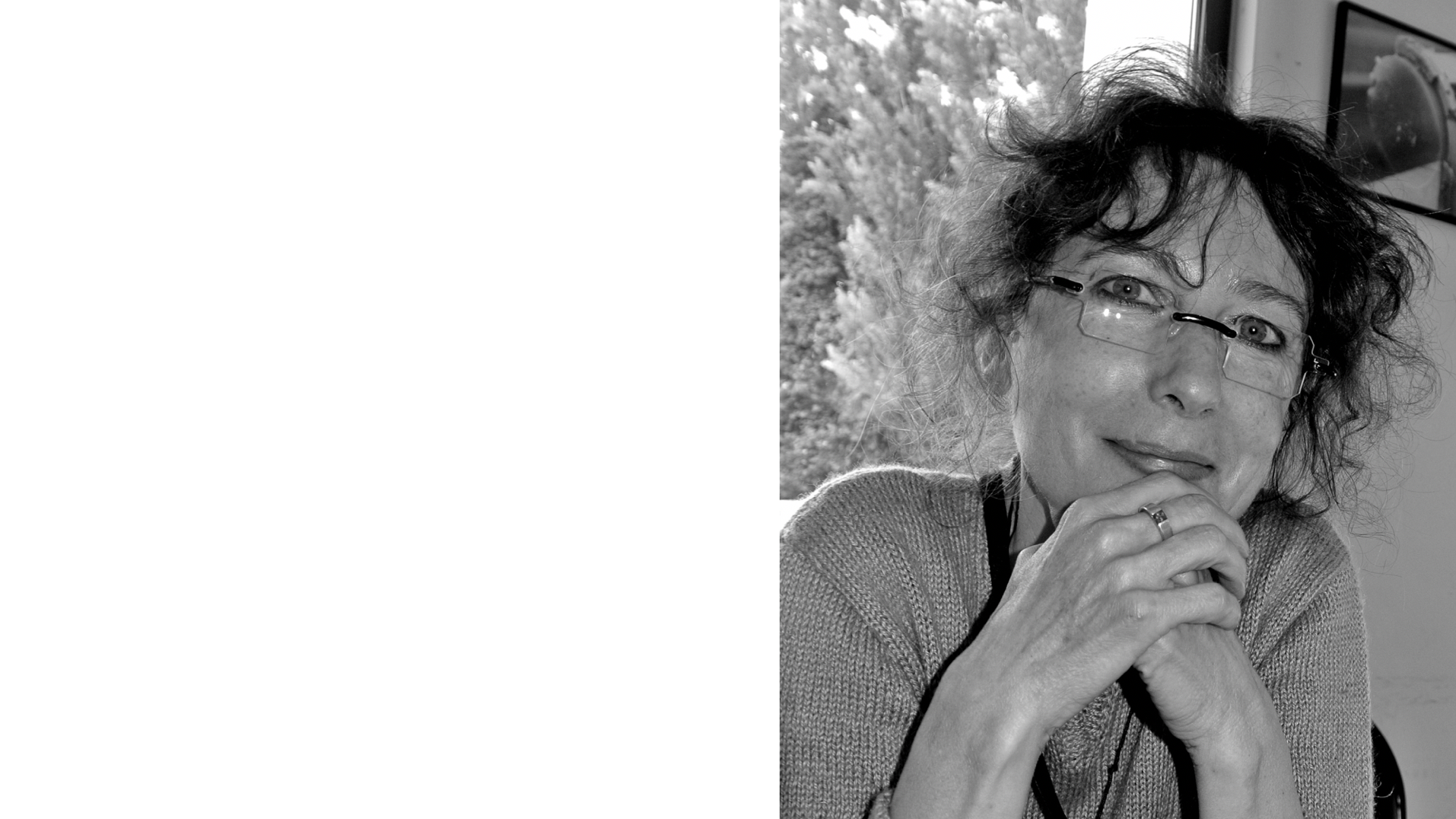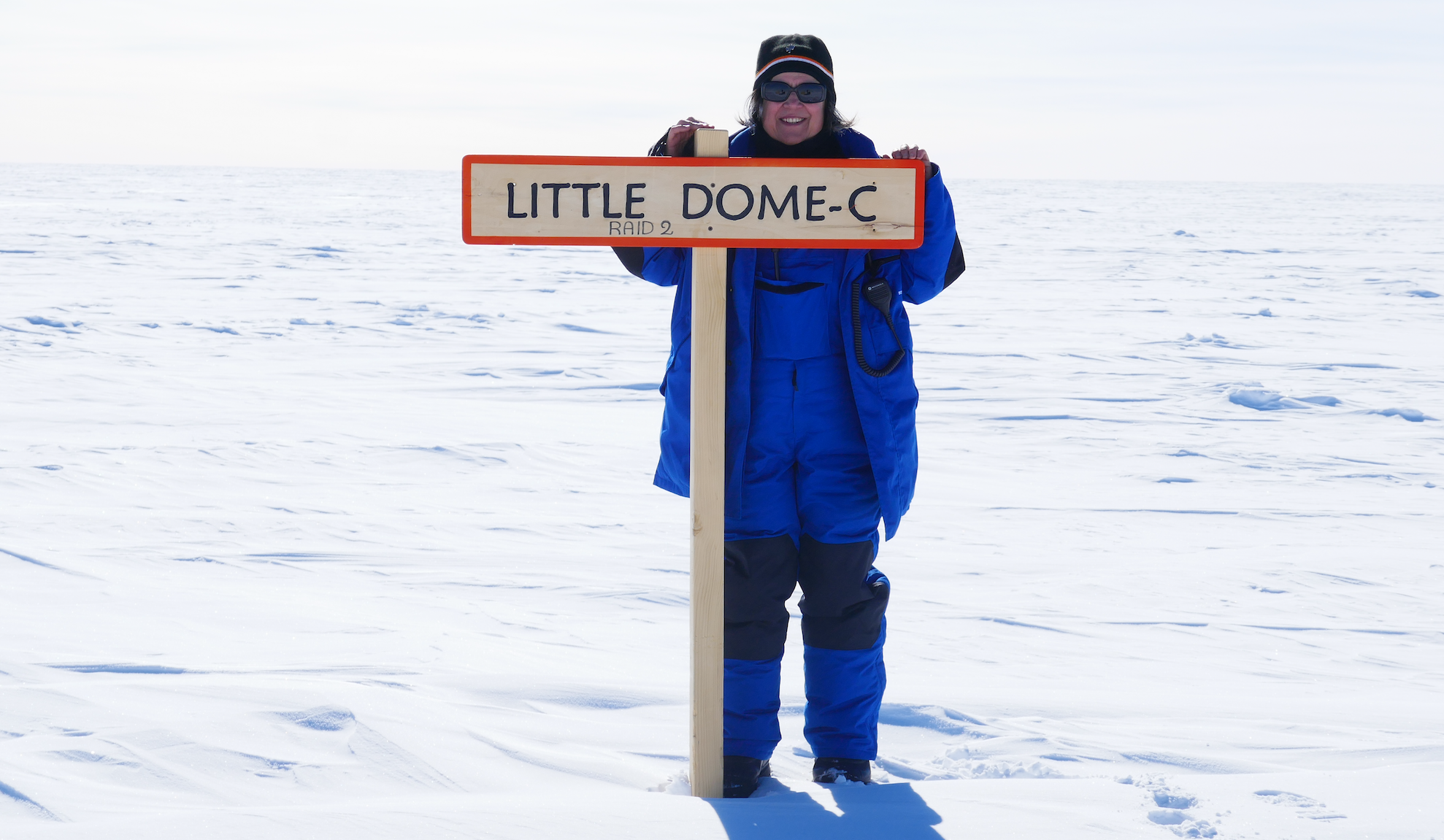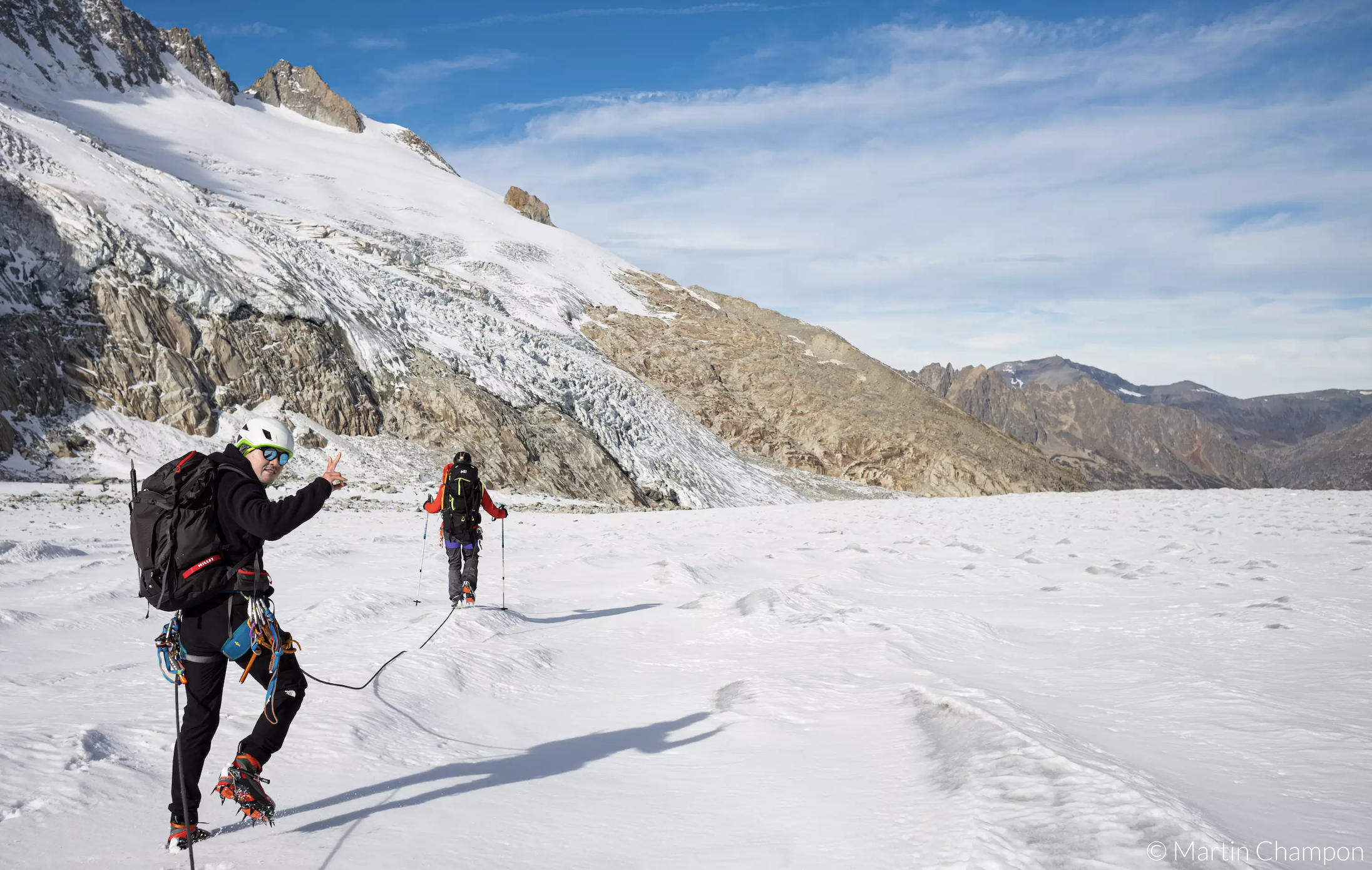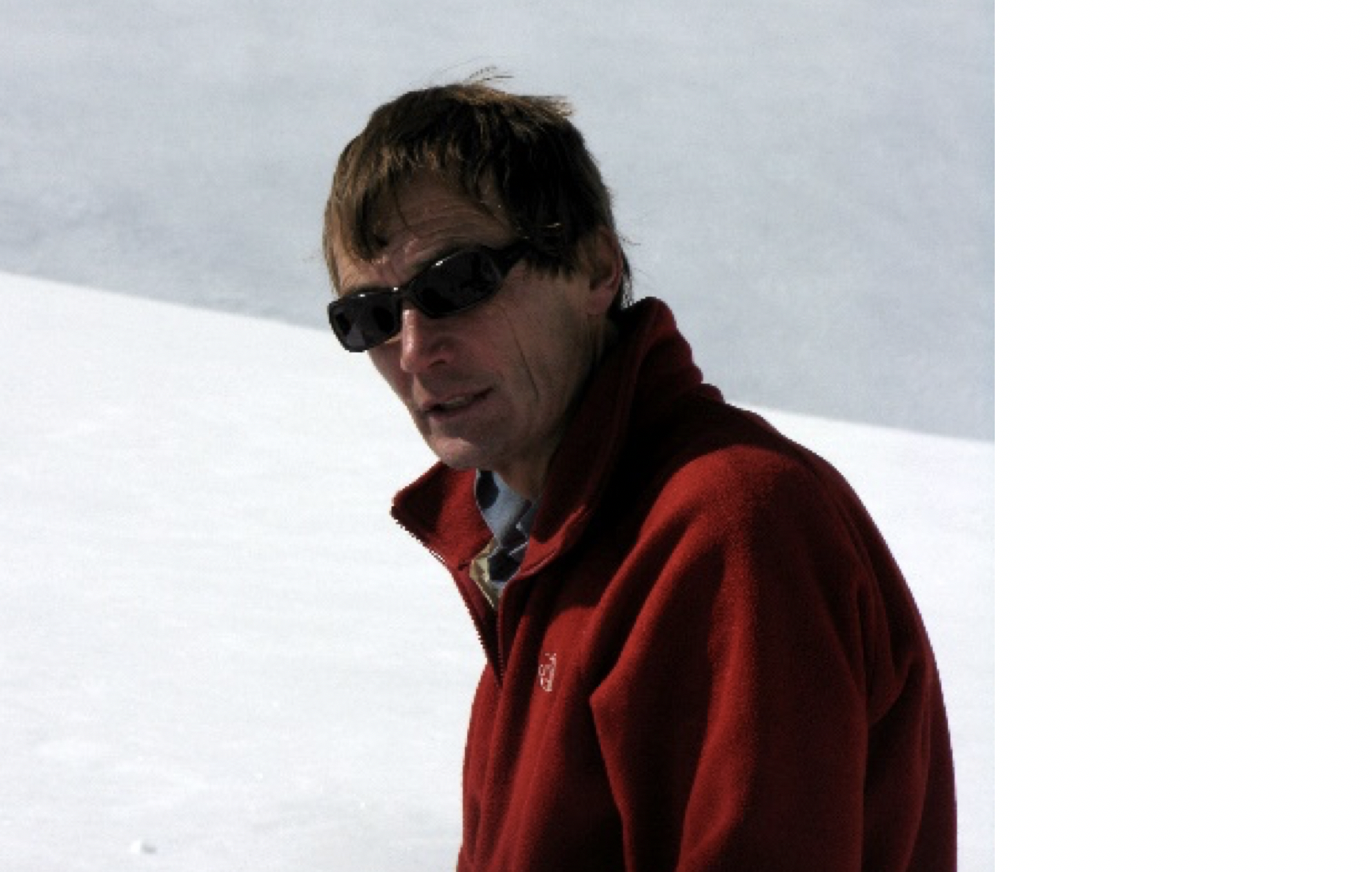Members
Guilhem BARRUOL, CNRS Senior Research Scientist (DR)
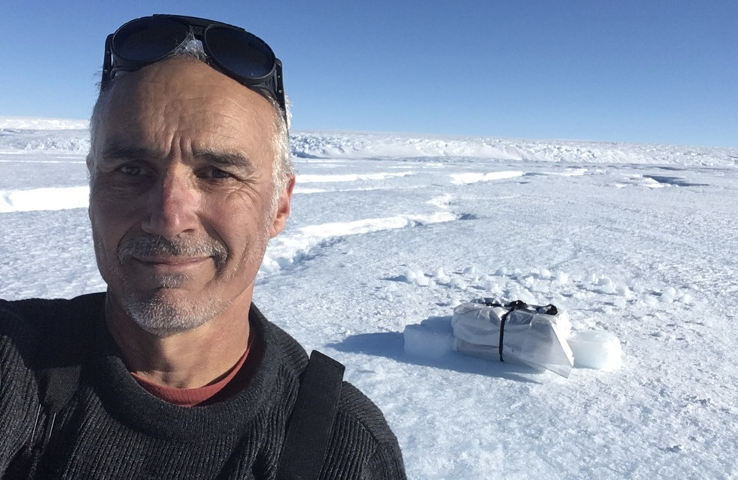
|
My work as a seismologist was largely focused on characterizing the structure and deformation of the upper mantle (mountain ranges, hot spots and mantle plumes). In recent years I have, however, developed an interest in environmental applications of seismology : characterization of ocean swell, monitoring of solid transport in rivers, ocean noise pollution, detection and monitoring of acoustic sources in the oceans (ships, whales), and use of cryoseismology to characterize ice dynamics, in particular to study Antarctic coastal glaciers such as the Astrolabe Glacier in Terre Adélie, its deformation and interaction with the ocean, which has motivated my arrival at IGE and in the CryoDyn team in 2021. |
Lucas BASTIEN, Research Engineer (ESM2025)
|
My scientific interests lie in the engineering aspects of modeling the fluid envelopes of our planet. After studying air pollution for over a decade, I joined the CryoDyn research team to work on the implementation of atmosphere-polar ice sheets interactions within a state-of-the art climate model, with the goal of improving sea level rise predictions. |
Luc BERAUD, PhD student
|
Coming from a remote sensing and spatial analysis background, I work on time series of satellite images covering the high mountains of Asia. I study a type of instability in the flow of certain glaciers, generally called "surge", which is not fully understood despite the global and local issues at stake associated with it. I evaluate with satellite images the variations in velocity, mass transfer etc. of these glaciers to better understand this phenomenon and its impact on glacier evolution. |
Jordi BOLIBAR, Visiting postdoc from U. Utrecht
|
I study the evolution of glaciers in response to climate change on a regional scale and its hydrological consequences. I use machine learning modelling approaches combined with physical-empirical models. During my PhD, I applied these methods to the study of the evolution of all the glaciers in the French Alps between 1967 and 2100, in order to better understand the reasons for these changes, the non-linear interactions between climate and glaciers and the hydrological consequences for the region. |
Julien BRONDEX, Postdoc
|
Generally speaking, my work is devoted to the numerical modeling of physical processes involved in cryospheric sciences. My PhD focused on quantifying the influence of damage and basal friction on the dynamics of polar ice sheets. I then worked on numerical representations of alpine glaciers. More recently, I turned my attention to the numerical treatment of the coupled processes of vapor transfer, heat transfer and settlement governing the evolution of snowpacks. All this work is based on the finite element method, and more specifically on the use of the open-source code Elmer/Ice . My post-doc at IGE will be dedicated to the modeling of specific alpine glaciers in order to better assess their potential instabilities. |
Justine CAILLET, PhD student (ANR EIS)
|
My research is part of the ANR-EIS Project. I am particularly interested in the interactions between the Southern Ocean and the Antarctic ice shelves in the Amundsen sector (West Antarctica), which is currently the main contributor of Antarctica to global sea level rise. To better understand the interplay of processus in this region and to propose future projections of the sector’s contribution to sea level, I rely mainly on the coupling between an ocean model (NEMO) and an ice flow model (Elmer-Ice). |
Nicolas CHAMPOLION, CNRS Research Scientist (CR)
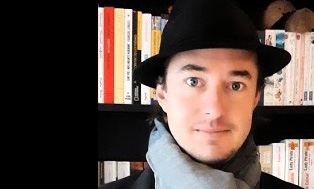
|
My research focuses on the evolution of all mountain glaciers on the planet and the consequences of their melting on sea level rise and water resources. I try to estimate the changes in glacier mass according to future climate variations. To do so, I use a numerical model to simulate glacier mass balance and ice dynamics, as well as satellite and in situ observations to calibrate and validate the simulations. |
Anne CHAPUIS, Communication Officer}
|
I am a communication officer, 50% for IGE and 50% for the European project H2020-PROTECT. PROTECT aims at producing robust global, regional and local projections of sea level rise from the land-based cryosphere on a range of timescales and for different climate change trajectories. I have a PhD in glaciology on the dynamics of iceberg calving in Svalbard and several years of experience in science communication at governmental level in Norway. |
Thomas CHAUVE, Postdoc (ERC Rheovolution)
|
My research focuses on the mechanical behavior of ice in its plastic deformation regime. It focuses more particularly on recrystallization mechanisms and their impact on the evolution of textures, microstructures and heterogeneities of the deformation field. I approach these problems by combining experimental studies (mechanical tests, field measurements by digital image correlation, crystallographic measurements) and numerical studies (CraFT, Rheolef). I am currently employed in the framework of the ERC Rheovolution project. I am also interested in open source science and software issues. |
Mondher CHEKKI, CNRS Research Engineer (IR)
|
I am a research engineer in scientific computing with expertise in high-performance computing. I am in charge of coordinating scientific computing activities and producing simulations based on community models developed or used at IGE : (i) ice flow model Elmer/Ice, (ii) atmosphere model MAR, (iii) hydrology model Parflow. I am also in charge of the implementation of these codes on the national super computers (GRICAD/CINES/IDRIS), the technical management and the inventory of needs (resources, training) in connection with the IGE teams involved (CryoDyn, C2H, PhyRev). I also take part in the activities of the GRICAD intensive computing centre (20% of the time). |
Gabi COLLAO-BARRIOS, Postdoc (ANR MAGIC)
|
My research focuses on ice dynamics and surface mass balance of glaciers and snow using numerical models and data in different parts of the world. I am currently studying ice thickness inversion and subglacial topography techniques to improve the method used for future projection of mountain glaciers and their contribution to sea level rise. I am implementing this method with the Elmer-Ice flow model in glaciers of the Mont-Blanc massif. My PhD thesis at IGE was on surface mass balance in the Patagonian North Ice Field using numerical models. And during my first post-doc in Colorado, USA, I studied the snow cover in the Rocky Mountains of Colorado and the ice pack dynamics in West Antarctica with ground and satellite data. |
Amaury DEHECQ, IRD Research Scientist (CR)
|
My research focuses on mountain glacier changes from remote sensing observations. I use a combination of modern satellite images, declassified spy satellite, and historical airborne/terrestrial photographs to study the response of glaciers to climate change over the 20th century. I measure in particular two important glacier features : 1) their volume changes to assess their contribution to sea level rise and water resources and 2) the ice flow velocity, which constrain the glacier geometry and its sensitivity to a change in climate. My main areas of interest include High-Mountain Asia, the Andes or the European Alps, but I’m also interested in global scale observations. |
Etienne DUCASSE, Research Engineer
|
I am a research engineer in geographical science, with a focus on remote sensing techniques. I work with Sentinel-2 and higher spatial resolution data (uav-borne, Pléiades), to estimate glacier flow velocities in the Alps. This work is supported by the ESA (European Space Agency) AlpGlacier project. |
Gaël DURAND, CNRS Senior Research Scientist (DR)
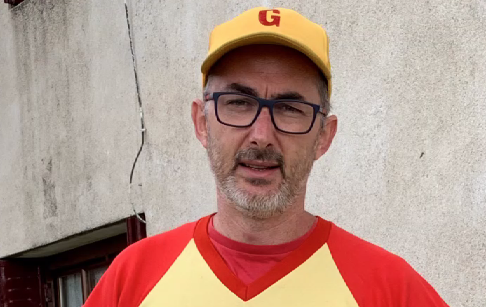
|
My research focuses mainly on the modeling of polar ice sheets, the dynamics of coastal glaciers and their impact on sea level. More particularly interested in the mechanisms of instabilities, I am trying to understand to what extent the ice sheets could enter a self-sustaining collapse regime and consider the rates of loss of ice mass to the ocean that this would generate. |
Olivier GAGLIARDINI, Professor at Univ. Grenoble Alpes
|
My research focuses on a better understanding of the physical processes that govern the flow of ice, glaciers and ice-sheets. This work consists in modeling these processes and their couplings using the finite element software Elmer/Ice. I also teach in the bachelor and master of Civil Engineering at University Grenoble Alpes. |
Cruz GARCIA MOLINA, Postdoc (ANR EIS, H2020 PROTECT, EU ESM2025)
|
I’m a young researcher passionate for continuous media dynamics. In particular I’m interested in numerical simulations with a strong impact on climate change. Currently, I run simulations using Elmer/Ice to study the large-scale Ice calving phenomenon. I enjoy helping to raise awareness of climate change through science communication, to which I have devoted my life. |
Adrien GILBERT, CNRS Research Scientist (CR)
|
My research focuses on modeling the response of glaciers to climate variability with physically detailed approaches to assess their thermal and dynamic changes. I participate in the development and use the Elmer/Ice finite element code. My current work focuses on the interactions between sub-glacial hydrology and basal ice sliding in order to better evaluate the acceleration of glaciers related to increasing surface melting. |
Fabien GILLET-CHAULET, CNRS Research Scientist (CR)
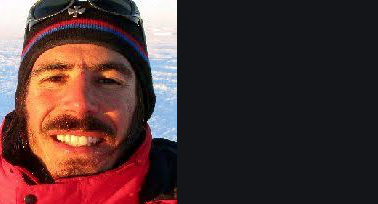
|
I study the dynamics of glaciers and polar ice sheets. I am one of the developers of the Elmer/Ice finite element code. In particular, I develop the data assimilation methods used to initialize the model from the available observations, and thus better understand and predict the evolution of these ice masses. |
Florent GIMBERT, CNRS Research Scientist (CR)
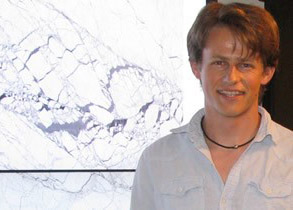
|
I study the mechanics of various Earth’s surface processes associated with ice, rock and water dynamics. I develop observational and theoretical frameworks that allow making use of innovative geophysical (mainly seismic) methods to infer key physical properties related to glacier flow (basal sliding, internal ice deformation and fracturation), open and confined channel flows (rivers, subglacial channels), mountain river sediment transport and sea-ice drift. I am also interested in studying more fundamental aspects of granular-like transport as well as fracturation processes in mono- and multi-phasic flows using simple experimental and numerical experiments. |
Eliot JAGER, PhD student (ANR SOSIce)
|
After an education in fluid mechanics and climate science, I joined IGE for my M2 internship. During these 6 months, I worked on a synthetic glacier case in order to evaluate the uncertainties of the reconstruction of basal conditions (stress and pressure at the base) through data assimilation. Simulations of future mass loss of the Greenland ice sheet being very sensitive to its initial state, the aim of my PhD is to improve the knowledge of the latter by using ensemble methods. |
Nicolas JOURDAIN, CNRS Research Scientist (CR)
|
My main research focus is on the interactions between the Antarctic ice sheet and the other components of the climate system, with the aim to reduce the uncertainty on future sea level rise. I am mostly working on numerical models representing interactions between the Southern Ocean and the Antarctic ice shelves. I am also interested in modelling the impact of a warming atmosphere on the stability of these ice shelves. I have other research activities on air-sea interactions and on various aspects of the Indo-Pacific climate. |
Christoph KITTEL, Postdoc (EU-H2020-CRiceS)
|
As a post-doctoral researcher, my current work involves contributing to the H2020 CRiceS project, which focuses on the study of the interactions between sea ice, snow, and the global climate system. Previously, I completed a PhD thesis at ULiège, where I specialized in the study of the Antarctic Ice Sheet using the MAR atmospheric regional climate model, as well as its coupling with the NEMO ocean model. In my current work, I am exploring how the ocean, atmosphere, and ice sheet interact with each other to influence the broader climate system. |
Tifenn LE BRIS, PhD Student
|
My research focuses on the study of the dynamics and deformation of an Antarctic coastal glacier interacting with the ocean, the Astrolabe glacier in Terre Adélie. This study is based on a joint analysis of cryoseismic and geodetic signals whose frequency complementarity of the sensors (from 200 Hz to a few minutes period for the seismometers, and from a few minutes to several months period for the GPS) deployed on the grounding line, around the glacier and on the seabed will allow to address multiple scientific questions. I am particularly interested in having a better understanding of the link between seismicity and |
Emmanuel LEMEUR, Lecturer at Univ. Grenoble Alpes
|
My research focuses on the dynamics of outlet glaciers that drain most of the continental ice from ice sheets (especially Antarctica) to the ocean. These glaciers show an important acceleration, with large potential impact on sea level. The Astrolabe Glacier observation site in Adelie Land was developed in order to understand the processes controlling ice dynamics. I also have expertise in geophysical characterisation tools such as differential GPS and radar (in particular to derive the ice sheet surface mass balance). In addition, I teach Earth sciences at University Grenoble-Alpes in STE Bachelor’s and Master’s degree courses. |
Pierre MATHIOT, Postdoc (EU-H2020 TiPACCs)
|
My research focuses on numerical modelling of the interactions between continental ice and the ocean (floating ice shelves, icebergs, tidal glaciers) in the NEMO ocean circulation model. In the framework of the TiPACCs project, I am in charge of the development of the global configuration of the coupled ocean (NEMO) / polar ice sheet (Elmer/Ice model). The use of such modeling tools will allow, at the end of the project, to assess the impact of possible changes in the Antarctic shelf water regime on the dynamics of the Antarctic polar ice sheet. |
Romain MILLAN, CNRS Research Scientist
|
My research focuses on the study of the glaciers and ice sheets dynamics. My postdoctoral work consists of calculating the flow velocities of mountain glaciers on a global scale in order to better document their seasonal variations and improve estimates of ice thickness. The aim is to better constrain the future contribution of glaciers to the sea level and the evolution of water resources. I am also interested in the interactions between the polar ice sheets and the ocean, and part of my work aims to establish maps of bathymetry under the platforms in Antarctica and Greenland, using airborne gravimetry methods to find out the access routes from warm waters to the ice sheet. |
Maurine MONTAGNAT, CNRS Senior Research Scientist (DR)
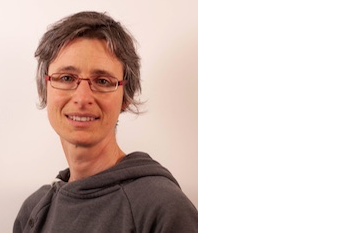
|
My research focuses on the understanding and modeling of fundamental mechanisms of ice (snow and firn) deformation, from the dislocation to the ice sheet scale. My work stands on strong collaborations with the Earth Sciences and Metallurgy communities to share and co-develop experimental and modeling tools. I am currently at the Center for Snow Studies (CEN CNRM Météo-France, Grenoble). |
Cyrille MOSBEUX, Postdoc (TiPACCs, PROTECT)
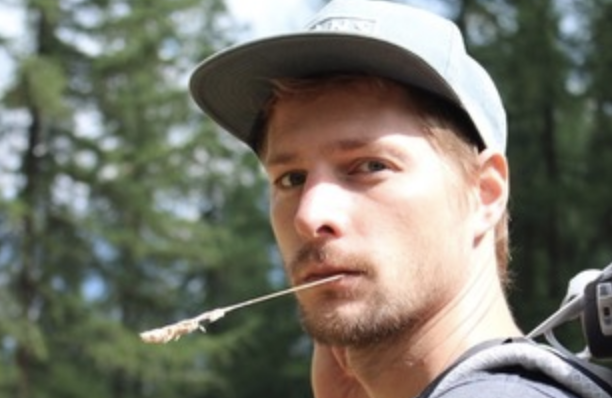
|
My research focuses on ice sheet and glacier modelling, and their interaction with the ocean. I am currently working on the role of crevasses and ice damage on ice flow, as well as the effect of ocean induced basal melting on the stability of ice shelves and their parent glaciers. My goal is to model these mechanisms the most accurately as possible to better understand the role they have played and will play in the acceleration and retreat of glaciers in the Amundsen Sea sector (Antarctica). |
Anna OLIVÉ-ABELLO, Postdoc (OCEAN:ICE)
|
My research interests relay on understanding the Southern Ocean dynamics and ocean-ice interconnections in relation to the climate system. During my PhD, I focused on understanding the pathways followed by Southern Ocean waters and the transformations they undergo from their formation until their incorporation into the South Atlantic Ocean. Additionally, I aimed to characterize and quantify the contribution of the cold-water route and its role in the returning branch of the AMOC. Currently, my interests consist in exploring how the melting rates and thickness of the icebergs calved from the Antarctic ice shelves influence the deep-water and sea-ice formation estimated from the NEMO ocean-iceberg modelling. |
Vincent PEYAUD, CNRS Research Scientist (CR)
|
I study the dynamics of glaciers and polar ice sheets. My first studies focused on the ancient ice sheets of the northern hemisphere and now focus on the evolution of mountain glaciers in relation to climate variability. |
Armelle PHILIP, Lecturer at Univ. Grenoble Alpes
|
My research activities aim to understand and model the mechanical behavior of the ice material in different forms (poly- and mono- crystalline ice, firn, snow, frost, hail). For this purpose, specific developments, microscopic observations, experimental tests (in cold rooms and under X-rays) as well as numerical simulations are implemented. |
Antoine RABATEL, Senior Research Scientist (Physicien CNAP)
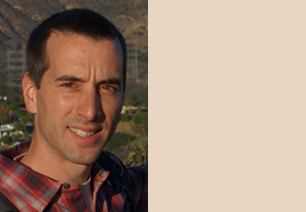
|
My research topics include mountain glaciers dynamics and surface processes as well as annual to multi-decadal changes in glacier geometry (area, volume). My work mainly relies on field-based and remote sensing measurements of glacier processes (mass and energy balances, ice flow velocities, surface area and elevation changes) through the French Service National d’Observation GLACIOCLIM. GLACIOCLIM aims at documenting glacier evolution in different climate regions worldwide, from the high latitudes (Antarctica) to the mid-latitudes (French Alps and Pyrenees) going through the low latitudes in the tropical Andes and Himalayas. |
Catherine RITZ, CNRS Senior Research Scientist (Emeritus)
|
My research focuses on the dynamics of ice sheets at various scales of space and time. To evaluate the response of an entire ice sheet to climate change, I have developed a thermomechanical evolution model, GRISLI (now mainly used at LSCE). On the other hand, ice flow is involved in the interpretation of deep ice cores for which I have developed dedicated models also used for the search of a very old ice site on the Antarctic plateau (activity partly in the Ice3 team). |
Anuar TOGAIBEKOV, PhD student (ANR SAUSSURE)
|
My doctoral research is part of a bigger project “SAUSSURE” whose main objective is to study the physical mechanisms that control glacier dynamics, with an emphasis on the interaction between glacier beds and subglacial hydrology. I use a combination of geodetic observations and physical models to better understand spatial and temporal variations of these complex systems. |
Christian VINCENT, CNRS Research Engineer
|
My research focuses on the relations between climate and the mass balance of mountain glaciers, the ice flow processes and the risks of glacial origin (water pockets, supra-glacial lakes and serac falls). Mountain glaciers are precious climatic indicators and this is the main reason for the GLACIOCLIM Observatory that Patrick Wagnon and I founded and which is now coordinated by Delphine Six. I often work with local communities or companies to try to answer questions related to the risks or fate of glaciers. This work requires both observations and modelling and is done in close collaboration with colleagues at IGE and other institutes. |
 The federation
The federation Intranet
Intranet
















